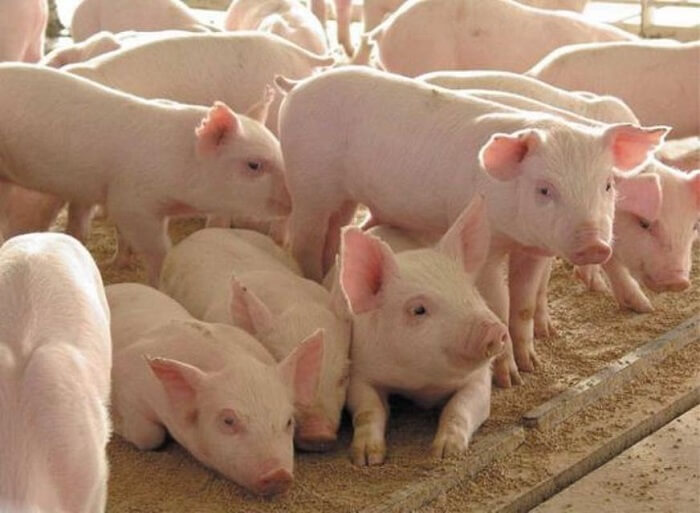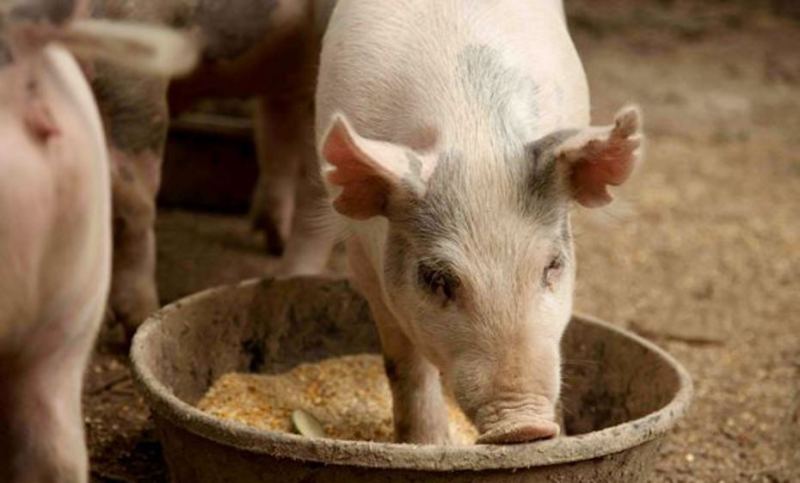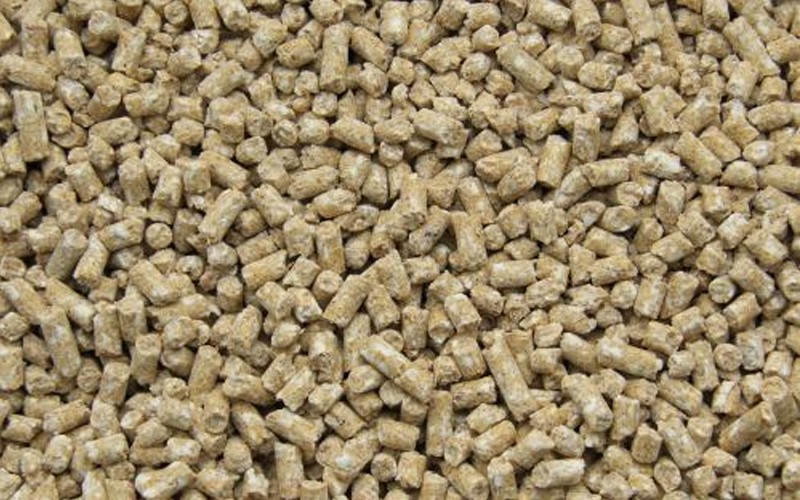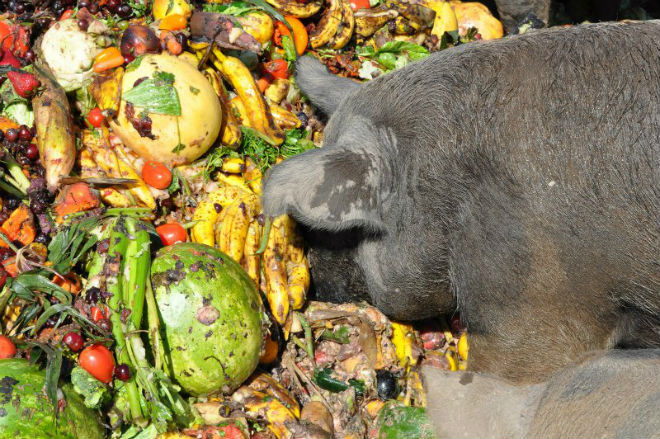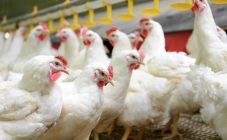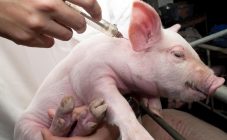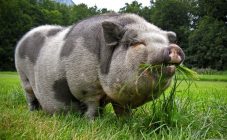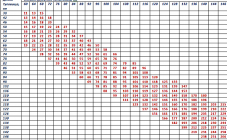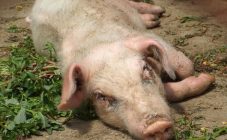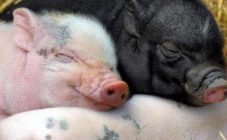Content:
- Growing stages of piglets
- Description of feed types and their effect on meat
- Piglet feeding types
- Feeding suckling piglets
- How to feed day-old piglets if there is no sow
- Piglet feeding regime
- The ratio of feed in the diet of piglets
- How to feed piglets at home for fast growth
- Features of piglet feeding
- What can not be fed to piglets
Growing stages of piglets
- The suckling period lasts one month, at which time the piglet feeds on the mother's milk.
- The period of weaning from the sow. Enough 7-10 days to wean piglets from permanent stay with their mother. Nutrition during this period should include nutrients.
- Piglet feeding depends on what kind of meat the owner wants to get.
For the full development of piglets, it is important to pay attention to the premises, places for feeding and walking, temperature conditions, timely treatment and vaccination.
Description of feed types and their effect on meat
Pigs have a single-chamber stomach, therefore, concentrated feeds are suitable for them. Do not include coarse and juicy foods high in fiber in the diet - they are very poorly digested. When choosing feed for piglets, you should pay attention to the desired taste of meat and lard. Different types of feed have different effects on the taste of the food.
To obtain the highest quality meat, the predominant products in the pig diet should be:
- cereals: peas, barley, millet;
- root vegetables and vegetables;
- greens;
- roughage;
- dairy;
- meat production waste.
The list of feeds in the second group includes:
- bran wheat, rye;
- corn;
- buckwheat.
Reduce the quality of meat and fat of the third group feed:
- oats;
- soy;
- cake.
Feeding with these products is allowed only after the animals gain 60 kilograms of weight.
It is possible to prevent the lack of minerals by adding chalk, bone meal, phosphorine, phosphorites, wood ash, limestone, wet sopropel, travertine, tricalcium phosphate, feed precipitate, feed yeast for pigs to the diet.
Novice farmers are interested in the question of whether it is possible to give salt to piglets. Veterinarians recommend adding table salt to suckers from 5-10 days of age. Salt is given in 2 grams. per day, gradually increasing its amount by 60 days to 10 grams.
Piglet feeding types
In total, there are three types of food: dry, wet and liquid feeding.
- Dry food - These are specially created feeds that include the necessary nutrients.This diet is considered the most balanced. The advantage of such nutrition: saves farmer time, reduces costs, allows self-preparation of feed, allows you to quickly fatten the animal, protects against digestive problems, relieves manure from the appearance of a characteristic ammonia smell, protects not eaten feed from spoilage.
- Wet feeding consists of mash made from boiled potatoes with the addition of herbs, vegetables, wet food waste and cake. These foods can quickly sour, so the troughs need to be cleaned of leftovers from time to time.
- Liquid type food involves the preparation of food by the farmer. Most often, piglets are fed with kitchen waste and yogurt. The diet is considered the most cost-effective, as it is almost always at hand. But such nutrition does not provide animals with the necessary vitamins and can negatively affect the taste of meat.
Feeding suckling piglets
Mother's milk is an important food for suckers. It helps to form the immune system and guarantees the quick and correct development of the individual. Starting from 14 days, milk alone becomes insufficient for piglets, so farmers gradually begin to introduce compound feed.
Piglet feeding rates:
- From 10 to 15 days, the feed rate is 25 grams.
- From 16 to 20 days increases to 50 grams.
- From 21 to 25 days, you can give up to 100 grams of feed.
- From 26 to 30 days, 225 g of feed is allowed.
- From a monthly period, the rate increases to 350 grams and continues to grow every 5 days by 100 grams.
How to feed day-old piglets if there is no sow
Usually suckers suck mother's milk 20-22 times a day. In this regard, feeding a piglet costs 18-20 times a day, the volume of cow or goat's milk should not exceed 50 grams.
After a week, the number of feedings is reduced to 10-12 times. Milk is fed through the nipple put on the bottle, the drinking temperature should be 40 degrees.
Piglet feeding regime
Young animals are fed ad libitum. It is important that there is always some kind of food in the trough. The moment of weaning from the sow is important, there is a rapid growth of the individual, so there is no need to limit her nutrition.
The ratio of feed in the diet of piglets
Experts believe that for the full development of gilts, concentrated feed should make up 80% of the total nutrition.
Vegetables and root vegetables should be added to 10% of the total feed.
The mixtures should also contain bean, bone, fish, meat and bone flour 5%.
How to feed piglets at home for fast growth
Feeding a piglet begins at 3 days of age. At the beginning, the young are given warm water. From 5 days of age, you can try to give solid food: fried grains of corn, wheat and barley. These grains have a positive effect on teeth.
First, the feed is scattered on the floor of the room, and then the piglets are taught to one eating place.
If the young do not want to try the roughage yet, it is allowed to drink it with cow's milk.
By the end of the first week, porridge, bone meal and chalk are added to the suckers' food. Juicy vegetables appear in the diet of young animals only after 10 days of life. Suitable for complementary foods:
- grated carrots;
- pumpkin;
- combisilos.
From 20 days, pigs can be fed with boiled potatoes; grated raw beetroot may also be present in the diet.
In the first months of life, the skeleton develops, the pig begins to grow rapidly and gain weight, therefore, protein products should be present in its diet: yogurt, low-fat milk, bone and fish meal.
The change in diet occurs when the piglets gain 20-25 kg. Active development during this period requires the presence of necessary substances, which can be obtained by mixing concentrated feed with crushed root crops, vegetables and herbs. Piglets can get vitamins from a mixture of herbs.
After 4 months, the farmer can add bread to the animal's diet. However, it is important to remember that you cannot feed a pig exclusively with this product. Bread and rusks can be added to the main diet; before use, dried crusts are softened and added to the mash.
Features of piglet feeding
Feeding suckers at home is due to several factors: age, breed, breeding purpose, financial condition of the farmer and his employment. For example, herders who cannot devote a lot of time to animals choose dry feed and premixes for feeding, but such food is quite expensive.
Characteristics of the dietary compound feed for piglets:
- high fiber content;
- low protein content;
- contains an easily digestible protein;
- low mineral content;
- the presence of feed acids;
- the presence of dairy components;
- content of probiotics, prebiotics, encapsulated acids and phytobiotics.
What can not be fed to piglets
When feeding piglets, the quality of the food is an important factor. Ingredients affected by fungus, mold and parasites are not allowed for pigs. Spoiled, low-quality products must be disposed of.
It is dangerous for the health of pigs if some herbs enter the feed:
- milkweed;
- black nightshade;
- dog parsley;
- cicuta;
- caustic buttercup;
- pickle and horse dill.
Sprouted potatoes can also be harmful. Before adding to the feed, all sprouts are removed and the green tubers are discarded. It is not necessary to cook a mash for piglets based on the water in which the potatoes were boiled - it can harm the health of the animals.
Most products for feeding piglets can be grown independently, which will reduce the cost of keeping animals. However, it is worth taking seriously the choice of products for feeding pigs and observing the recommended norms. It is also worth keeping an eye on what the piglets eat to prevent accidental poisoning by spoiled food or poisonous herbs.
